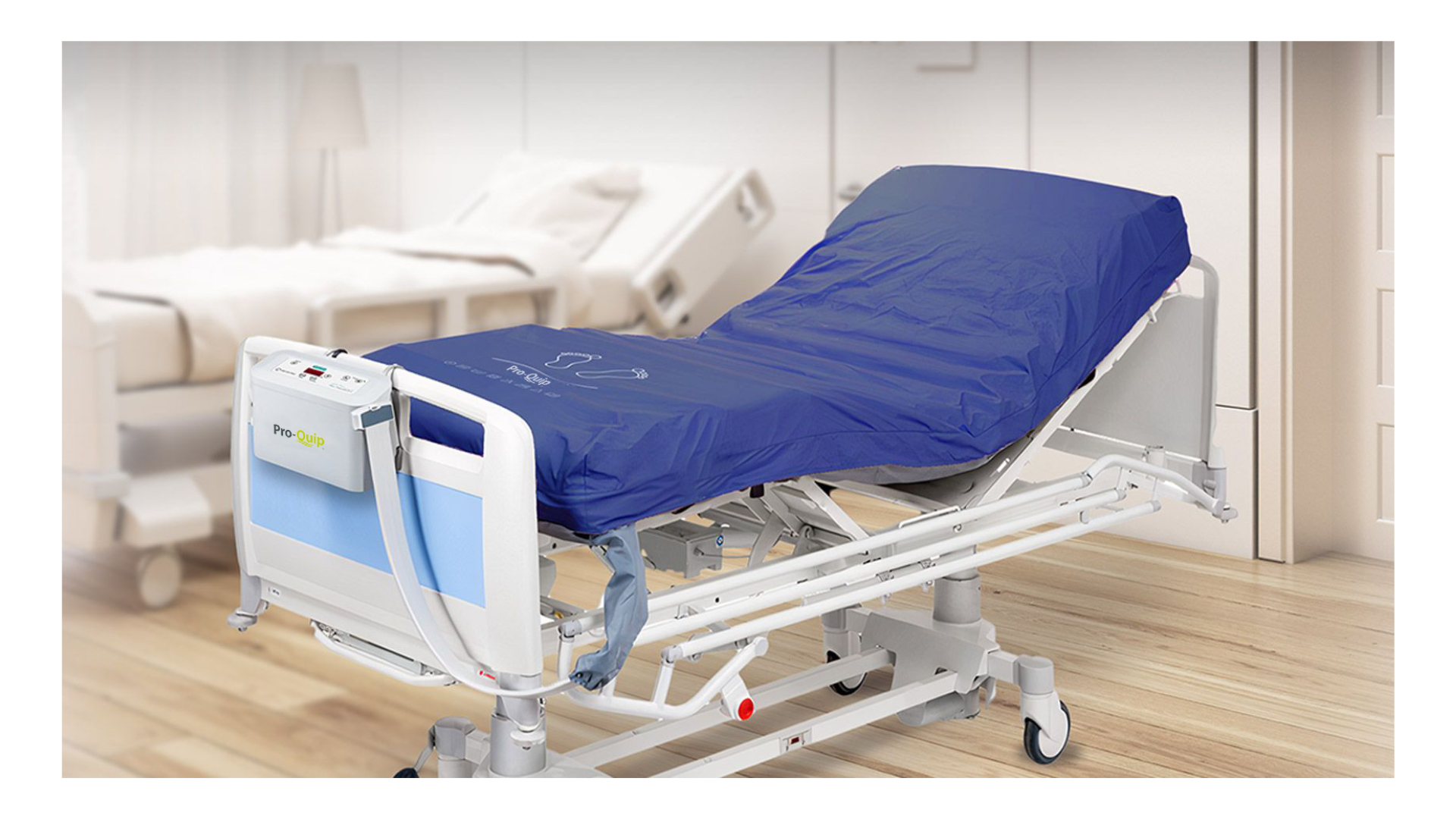Running a care home means providing your residents with the highest standard of comfort and care. Integral to this experience is selecting the perfect assisted bathing solution. Such decisions aren't just about utility; they’re about ensuring the safety, dignity, and well-being of your residents. What are the key things to consider when looking for assisted bathing solutions in care homes?
Key Take aways
-
Prioritise safety features to protect both residents and caregivers when bathing
-
Assess accessibility needs based on residents' mobility levels
-
Ensure ease of use with user-friendly controls and automated systems
-
Consider maintenance requirements to keep the equipment functional and hygienic
-
Evaluate the costs, including initial investment and ongoing expenses
Consider safety features
When selecting an assisted bath, it's crucial to review the safety features offered. Modern assisted baths come equipped with a range of safety measures that significantly reduce the risk of accidents and injuries.
Safety features such as non-slip surfaces are essential. These elements prevent falls, a common concern in bathing areas. Imagine the peace of mind knowing your residents are less likely to slip and injure themselves due to carefully designed flooring.
Moreover, built-in temperature controls are indispensable. Scalding can be a serious hazard, especially for vulnerable residents. Specialist baths equipped with these controls maintain optimal water temperature, ensuring safe and comfortable sessions.
Grab rails and support bars are other vital safety features. They provide additional stability, allowing residents to move confidently and independently in both baths and accessible showers. Whether it's entering, exiting, or simply adjusting positions, these handles are lifelines in care home bathrooms.
Consider also the emergency call features. These systems enable residents or caregivers to summon immediate assistance in case of unforeseen issues. Being able to call for help instantly can make a significant difference during critical moments.
Lastly, on the element of hygiene, adjustable baths and bath hoists specifically designed to reduce the risk of infection control come highly recommended.
.jpg?width=534&height=301&name=Duporth%20%26%20Charlestown%20Assisted%20Bath%20(6).jpg)
Assess accessibility needs
Different residents have different levels of mobility, so providing an accessible bathing environment is crucial. Your bath's accessibility features can enhance or hinder the bathing experience for residents and caregivers alike.
For residents with limited mobility, walk-in baths can be a game-changer. Instead of having to step over high tub edges, residents can literally walk into their bath, making the process safer and more straightforward.
Height-adjustable baths serve a dual purpose. They adapt to residents' needs, whether they are standing, sitting, or lying down, and they also cater to caregivers. By raising or lowering the bath to a comfortable working height, caregivers can assist without straining their backs.
Don’t forget the importance of hoist compatibility. Some residents may require additional support moving from a wheelchair to the bath. A hoist-compatible bath ensures they can be moved safely and efficiently without any undue stress.
Consider the bath's door width and space. Baths with wide doors and spacious interiors offer better access for wheelchair users, making the entire experience less cumbersome and more dignified.
Lastly, assisted showers and wet rooms are a fantastic option for those who prefer a standing or seated shower. These accessible bathrooms come equipped with high-functionality shower seats and adjustable shower heads, catering to an array of mobility needs.
Evaluate ease of use
Ease of use is about making bathing straightforward for both residents and caregivers. Complicated systems can lead to frustration and even errors, so choosing a bath with intuitive user-friendly controls is imperative.
Think about simple, intuitive interfaces. These reduce the risk of operational errors, making the bath safer and more enjoyable to use. Instead of fiddling with complicated settings, users can focus on the bathing experience itself.
Remote control options are also a worthwhile investment. Caregivers can assist in bathing without the need for physical strain, operating the bath from a distance. This flexibility can be particularly beneficial in emergency situations.
Consider automated filling and drainage systems. Such features save time and effort, ensuring the bath is ready quickly and drained efficiently after use. No more waiting around for the tub to fill or empty.
Clear instructions and labelling are other aspects to pay attention to. Simplified, easy-to-understand directions can make a significant difference. They aid both new and experienced caregivers in using the bath without the risk of mishaps.
Ultimately, the goal is to provide a comfortable bathing experience. Baths that score high on usability make the entire bathing process more manageable and less stressful for everyone involved.
Maintenance requirements
Maintenance is a critical yet often overlooked aspect. Regular upkeep ensures your bathing solution stays functional and hygienic, extending its lifespan and keeping it safe for residents.
Look for baths made from easy-to-clean materials. These save you time and effort while reducing infection risks. Non-porous surfaces, for example, are less likely to harbour germs and mould, making them ideal for care home environments.
Consider baths with built-in self-cleaning systems. These features can significantly lower the demands of regular maintenance. Imagine a system that sanitises itself, cutting down on the labour and chemicals typically needed for cleaning.
Accessibility to parts simplifies repairs and replacements. If something goes wrong, easy access to the components allows for quicker fixes, reducing downtime. This means your bath is back in operation faster, ensuring continuity of care.
Also, don’t forget about manufacturer warranties. These provide a safety net for unforeseen issues. Knowing that repairs and replacements are covered gives you added assurance and peace of mind.
In essence, a bathing solution with minimal maintenance requirements is not only cost-effective but also essential for a long-lasting, hygienic facility.

Cost considerations
When choosing an assisted bath, one of the most pressing aspects to contemplate is the cost. This involves not just the initial purchase price but also long-term expenses.
Initial investment costs can vary widely based on the bath's features and quality. While a high-end model with a plethora of features may seem expensive initially, it's often worth considering the long-term benefits it offers.
Think about the long-term costs, which include maintenance and potential repairs. Regular servicing and parts replacements can add up, so it’s wise to factor these into your overall budget.
Energy-efficient models can offer significant savings on utility bills over time. Although they might carry a higher upfront cost, the savings on water and electricity can make them a savvy financial choice in the long run.
Don’t forget to explore grants or funding options. Various schemes exist to help offset some of the initial costs, making it easier for care homes to invest in quality equipment without breaking the bank.
Weigh the cost against the benefits to both residents and staff. A well-chosen assisted bath can improve residents' wellbeing and staff efficiency, making it an invaluable investment for your care home’s future.
Focus on the comfort for residents
Comfort isn't a luxury—it's a necessity. The right bath can provide an atmosphere of relaxation and dignity for your residents.
Look for comfortable, ergonomic designs that improve the overall bathing experience. Residents should feel at ease, whether they’re sitting, leaning, or lying in the bath.
Adjustable seating is another feature to consider. With adaptable seats, each resident's individual needs are met, allowing for a more personalised bathing experience. It's particularly beneficial for those with specific health conditions or physical limitations.
Hydrotherapy features can offer therapeutic benefits. The gentle water jets can ease sore muscles, improve circulation, and provide a calming sensory experience, making the bath more than just a place to get clean.
Heating options are also worth noting. A warm bath isn’t just a luxury; it’s essential for residents, especially those with conditions sensitive to cold. Integrated heating ensures that they remain comfortable and relaxed throughout.
Lastly, consider options for customisation. Allowing residents to personalise their bathing experience, whether through adjustable water pressure, lighting or specialised jet functions, can make a significant difference in their overall comfort and satisfaction.
Explore different assisted bathing solutions
You’re not limited to a one-size-fits-all approach. There are numerous assisted bathing solutions available, each offering different features and benefits.
.Various brands offer an array of options, so understanding what's out there helps in finding the best fit for your care home. Look into what different companies provide and how they compare against each other.
Be sure to read reviews and testimonials. Unbiased opinions from other care home operators can provide valuable insights that you might not find in promotional materials. Real-world experiences often reveal hidden strengths and weaknesses.
Comparing multiple models helps in making an informed decision. By looking at different options side-by-side, you can evaluate which features and benefits align best with your care home’s specific needs.
Exploring different solutions allows you to choose a bath that fits seamlessly with your care environment, enhancing both resident and caregiver experiences.
Consult with experts in assisted bath products
Consulting with experts can be a game-changer in your decision-making process. Professionals in the field offer invaluable insights into the latest advancements and best practices.
Experts can tailor solutions to your specific needs. They bring a wealth of knowledge on different products, what works best for various care settings, and how to maximise the utility of your choice. Here at Fairfield Care, we can install and service a range of accessible baths specifically for care homes. We can arrange training on the proper usage and maintenance, ensuring that your team can operate the equipment efficiently and safely, minimising the risk of issues down the line.
Networking with other care home operators can also be valuable. Sharing experiences and recommendations can guide you in making more informed decisions, possibly steering you towards solutions you hadn't considered before.
Choosing the perfect assisted bath for your care home is more than just a checklist of features; it’s an investment in the safety, comfort, and dignity of your residents. Whether you're exploring different solutions or consulting with experts, the right choice can truly transform the bathing experience in your care home.


